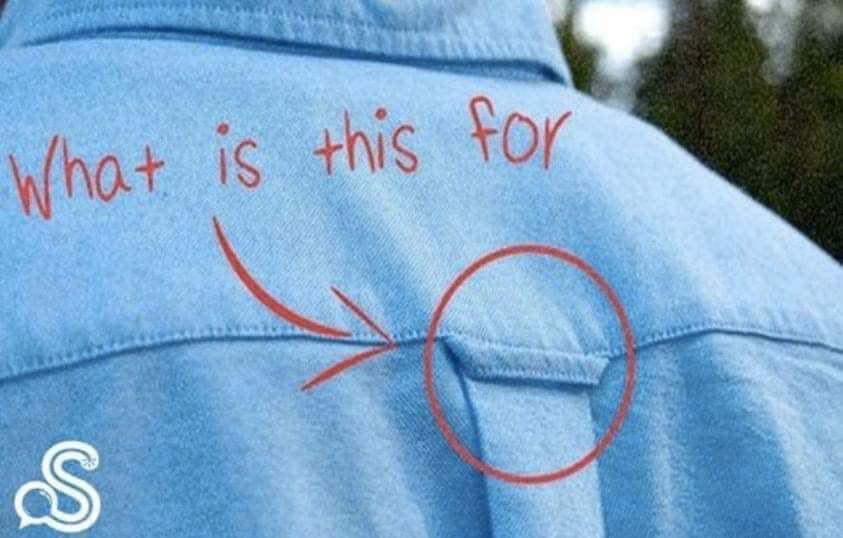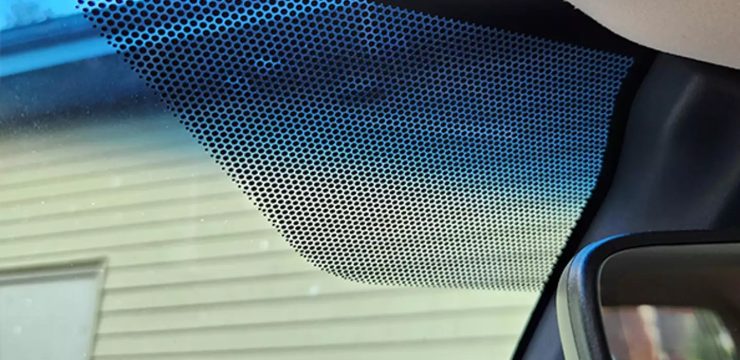Have you ever noticed that small loop sewn onto the back of some men’s shirts, particularly on dress or button-down shirts? It’s easy to overlook, but it turns out that this little piece of fabric has quite an interesting history behind it. Many people have wondered about its purpose, and you might be surprised to learn just how functional it used to be.

The Origins of the Shirt Loop: A Functional Accessory
Men’s dress shirts often feature a small loop on the back, right between the shoulder blades, usually on the yoke. At first glance, it might seem like just a decorative touch. However, this loop was originally added for practical reasons. The story behind it actually dates back several decades and has roots in American fashion history.
These loops, commonly known as “locker loops” or “fairy loops,” were originally designed to make it easier for men to hang their shirts without wrinkling them. Before closets became a common feature in every home, people often had limited space to store their clothing. The loop was a convenient solution, allowing shirts to be hung on hooks or locker pegs without needing a hanger. This was especially useful for men on the go, such as college students who relied on communal lockers or gym-goers who needed a quick way to stow away their shirts.
How American Sailors Popularized the Shirt Loop
One of the most fascinating aspects of the shirt loop’s history involves American sailors. It is believed that sailors used these loops to hang their shirts on ship hooks, keeping their clothes tidy and off the damp floors. This practical innovation soon became a standard feature in men’s fashion, especially for button-down shirts that were versatile enough to be worn in both casual and slightly formal settings.
The concept was eventually adopted by mainstream menswear manufacturers, becoming a staple of the preppy style that emerged in the mid-20th century. The loops became particularly popular on Ivy League campuses in the 1960s, where they became a distinctive feature of the “preppy” wardrobe. According to Gant, a well-known clothing manufacturer, the idea of incorporating locker loops into shirts was part of their effort to cater to the needs of college students. The trend caught on quickly, and before long, the loop was a common sight on button-down shirts worn by young men across the country.
The Social Meaning Behind the Loop: A Hidden Signal?
Beyond its practical use, the shirt loop once held a more symbolic meaning. In the 1960s, it became a subtle way for college students to indicate their relationship status. If a man cut off the loop from his shirt, it was a sign that he was in a committed relationship and no longer “available.” This quirky social code added a layer of intrigue to what was initially just a functional accessory. Of course, as fashion evolved, this hidden meaning faded, and the loop’s significance shifted back to being purely decorative.
The Modern-Day Shirt Loop: A Nostalgic Touch
Today, the loop on the back of shirts is mostly a remnant of the past. It no longer serves a significant practical purpose, given the widespread use of closets and hangers. However, many manufacturers still include it as a nod to tradition. The loop has become more of a nostalgic touch, a way to honor the classic designs that shaped American menswear. While most people don’t use it to hang their shirts anymore, the loop remains a familiar and even charming detail on modern dress shirts.
Interestingly, the inclusion of the loop has become more about fashion than function. It’s a small, almost unnoticeable feature that adds a touch of heritage to an outfit. For those who appreciate the history of fashion, the loop serves as a reminder of how clothing styles have evolved over the years while retaining certain iconic elements.
The Transformation of American Fashion
Men’s fashion in America has gone through significant changes over the past century, with each decade bringing new styles and trends. Yet, some elements, like the shirt loop, have persisted. The loop’s journey from a practical accessory for sailors and college students to a mere decorative feature highlights how fashion adapts while holding onto bits of its past.
Reflecting on the history of something as simple as a shirt loop is a reminder that even the smallest details in our clothing often have a story behind them. It’s these hidden stories that make fashion so fascinating. What once served a clear, functional purpose has now become a subtle, almost forgotten piece of American fashion history.
A Quick Look Back at the Shirt Loop’s Evolution
Let’s recap the loop’s journey: it started as a practical solution for sailors and gym-goers who needed a quick way to hang their shirts. It then found its way into college fashion, where it took on a social meaning, becoming a discreet signal of one’s relationship status. Eventually, it settled into the realm of fashion nostalgia, serving as a reminder of simpler times in the world of menswear.
So, the next time you see that little loop on the back of a shirt, you’ll know it’s more than just a decorative detail. It’s a piece of history sewn into the fabric of American fashion—a subtle nod to a bygone era when even the smallest elements of clothing had a practical purpose. Whether you use it to hang your shirt or simply appreciate it as a quirky detail, the loop is here to stay, quietly linking the past with the present.
The story of the shirt loop is a perfect example of how fashion evolves while still keeping traces of its origins. It may no longer be used for its original purpose, but it remains a charming touch that connects today’s style to its roots in American culture.





